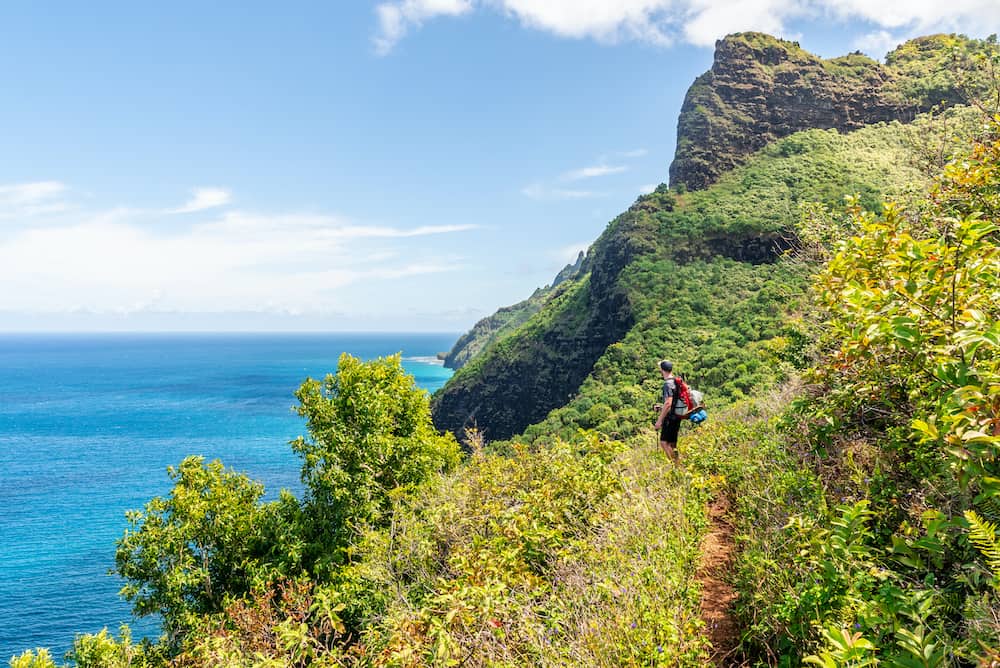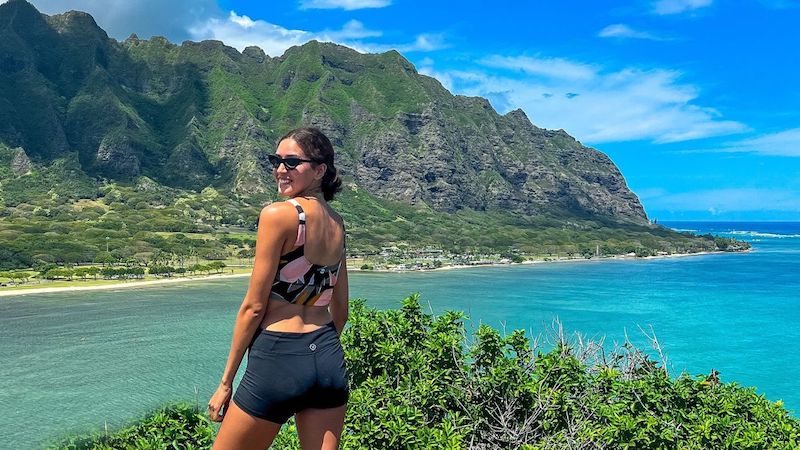Thinking of embarking on a solo adventure to the beautiful islands of Hawaii? Whether you’re seeking a peaceful retreat or an exhilarating escapade, this article will provide you with essential tips to ensure that your journey is not only memorable but also safe and enjoyable. From navigating the islands’ transportation system to seeking out hidden gems off the beaten path, you’ll discover valuable insights that will empower you to make the most out of your solo travel experience in Hawaii. So pack your bags, embrace the aloha spirit, and prepare yourself for an unforgettable solo adventure in paradise!
When to go
Best time to visit Hawaii
If you’re planning a trip to Hawaii, it’s important to consider the best time to visit. The peak tourist seasons in Hawaii are during the summer months and the winter holidays. However, if you prefer a less crowded and more affordable experience, you may want to consider visiting during the shoulder seasons, which are the months of April, May, September, and October. During these months, you can still enjoy pleasant weather and take advantage of lower rates for accommodations and activities.
Avoiding peak tourist seasons
If you’re looking to avoid the crowds and higher prices, it’s best to avoid visiting Hawaii during the peak tourist seasons. The summer months from June to August and the winter holidays from December to early January are the busiest times in the islands. Not only will you find more tourists during these times, but prices for accommodations, flights, and activities tend to be higher as well. By choosing to visit during the shoulder seasons or even during the off-peak months of November and March, you can enjoy a more relaxed and budget-friendly trip.
Planning and Preparation
Researching the islands
Before your trip, it’s important to do some research on the different islands of Hawaii to determine which one(s) suit your interests and preferences. Each island offers unique landscapes, activities, and cultural experiences. For example, if you’re interested in beautiful beaches and a vibrant nightlife, you might want to consider visiting Oahu. On the other hand, if you prefer a more laid-back and secluded atmosphere, Kauai or Molokai might be a better fit. Take the time to read travel guides, browse online forums, and look at pictures to get a better idea of what each island has to offer.
Choosing the right island
Once you’ve done your research, it’s time to choose the right island for your trip to Hawaii. Consider what activities and sights you’re most interested in and which island caters to those preferences. If you’re into watersports and bustling cities, Oahu might be your best bet. If you’re looking for stunning natural beauty and outdoor adventures, consider visiting Maui or Kauai. Don’t forget to take into account factors such as budget, transportation options, and accommodation availability when making your decision.
Booking accommodations
When it comes to booking accommodations in Hawaii, there are plenty of options to choose from. Whether you prefer a luxury resort, a boutique hotel, a vacation rental, or a budget-friendly hostel, you’ll find something that suits your needs. It’s important to book your accommodations well in advance, especially if you’re traveling during the peak tourist seasons. Keep in mind that prices tend to be higher during these times, so it’s a good idea to compare rates and book early to secure the best deals. Additionally, consider the location of your accommodations and how it aligns with your planned activities and attractions.
Budgeting and saving money
Hawaii is known for its stunning beauty and unique experiences, but it’s no secret that it can be an expensive destination. To make the most of your trip while sticking to your budget, it’s important to plan and save money in advance. Start by setting a realistic budget for your trip, including accommodations, transportation, meals, activities, and souvenirs. Look for ways to save money, such as booking flights and accommodations during off-peak times, opting for local eateries instead of touristy restaurants, and choosing free or low-cost activities and attractions. Remember to allocate some funds for unexpected expenses or emergencies as well.
Packing essentials
When packing for your trip to Hawaii, it’s essential to bring a few key items to ensure a comfortable and enjoyable stay. Hawaii is known for its warm and tropical climate, so pack lightweight and breathable clothing, including swimsuits, shorts, t-shirts, and dresses. Don’t forget to bring a hat, sunscreen, and sunglasses to protect yourself from the sun’s rays. It’s also a good idea to pack a reusable water bottle to stay hydrated, as well as insect repellent and a first aid kit for any potential mishaps. Lastly, don’t forget your camera to capture the breathtaking scenery and memorable moments.
Travel insurance
While travel insurance may not be the first thing on your mind when planning a trip to Hawaii, it’s an important aspect that shouldn’t be overlooked. Travel insurance provides coverage for unexpected events such as illness, injury, or trip cancellations, offering you peace of mind throughout your journey. Before purchasing travel insurance, carefully review the policy to understand what is covered and what is not. Consider factors such as medical coverage, trip cancellation protection, and baggage loss or damage coverage. It’s always better to be prepared, just in case anything goes wrong during your trip.
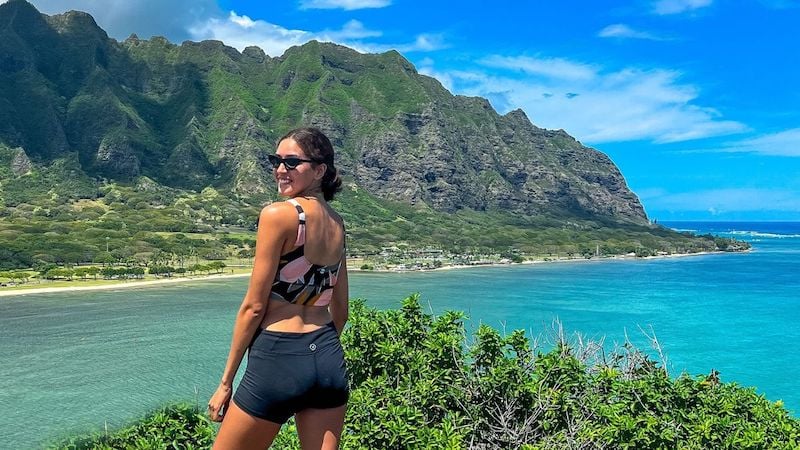
Safety Tips
Informing someone about your plans
As a solo traveler in Hawaii, it’s crucial to inform someone you trust about your travel plans. Whether it’s a friend, family member, or even your hotel concierge, let them know where you’ll be staying, which activities you plan to participate in, and the general itinerary of your trip. In case of an emergency or if you go missing, someone will have a basic understanding of your whereabouts and can provide valuable information to authorities.
Emergency contact information
Before setting off on your solo adventure in Hawaii, make sure to have a list of emergency contact numbers readily available. Include important numbers such as the local police department, ambulance services, and the nearest embassy or consulate if you’re visiting from another country. It’s always better to be prepared and have these numbers easily accessible in case of any emergencies.
Being cautious with personal belongings
While Hawaii is generally a safe destination, it’s always wise to be cautious and mindful of your personal belongings. Avoid carrying large sums of cash and keep your valuables such as passports, credit cards, and electronics secured in a hotel safe whenever possible. When you’re out and about, it’s a good idea to use a secure bag or backpack to store your belongings, and never leave them unattended, especially on the beach or in crowded areas.
Staying aware of your surroundings
When exploring Hawaii alone, it’s important to stay aware of your surroundings at all times. Pay attention to your surroundings, especially in unfamiliar areas or when you’re out at night. Trust your instincts and avoid any situations or individuals that make you feel uncomfortable. If you’re unsure about a certain area or activity, it’s always better to seek advice from locals or travel professionals.
Water safety precautions
Hawaii offers stunning beaches and crystal-clear waters that are perfect for swimming and water activities. However, it’s crucial to take precautions when it comes to water safety. Always swim in areas with lifeguards and pay attention to any warning signs or flags. Be aware of rip currents and undertows, and avoid swimming alone, especially in remote areas. If you’re participating in any water sports or activities, make sure to follow the instructions of trained professionals and use the necessary safety equipment.
Respecting the culture and local customs
Hawaii has a unique culture and history that should be respected and appreciated. As a visitor, it’s important to familiarize yourself with local customs and etiquette. For example, it is customary to remove your shoes before entering someone’s home in Hawaii. Additionally, respecting sacred sites and not disturbing or taking anything from them is crucial. Learn a few basic Hawaiian phrases and greetings to show respect and appreciation for the local culture. By respecting the customs and traditions of Hawaii, you’ll not only have a more meaningful experience but also contribute to the preservation of the island’s rich heritage.
Getting Around
Renting a car
Renting a car in Hawaii is a popular choice for travelers who want the flexibility to explore various parts of the islands at their own pace. It’s important to note that renting a car in Hawaii can be quite expensive, especially during the peak tourist seasons. If you choose to rent a car, make sure to book it in advance to secure the best rates and availability. Familiarize yourself with the traffic rules and regulations in Hawaii, as well as parking options and costs. Be aware that some areas, such as popular tourist attractions and beaches, can get crowded, and parking may be limited.
Using public transportation
If you prefer not to rent a car or are looking for a more budget-friendly option, public transportation is available on some of the Hawaiian islands. Oahu, for example, has an extensive bus system operated by TheBus, which can take you to various attractions, neighborhoods, and popular beaches. The cost of a bus ride is relatively affordable, and buses frequently run throughout the day. Other islands such as Maui and Kauai also have public transportation options, although they may be more limited in terms of routes and schedules. Check local transportation websites or ask your hotel for information on the public transportation system available in the area you’re visiting.
Ridesharing services
Ridesharing services such as Uber and Lyft are also available in Hawaii, offering an alternative to traditional taxis and public transportation. These services can be convenient, especially if you’re staying in a more remote area or if you prefer not to drive. Keep in mind that ridesharing services may have limited availability in certain areas, especially outside of urban centers. Additionally, during busy times or in popular tourist locations, surge pricing may be in effect, resulting in higher fares. If you plan on using ridesharing services, make sure to have the app installed on your phone and familiarize yourself with the process of requesting a ride.
Bicycling
Cycling enthusiasts will be delighted to know that biking is a popular way to get around in Hawaii, especially in more urban areas. Some cities, like Honolulu on Oahu, have designated bike lanes and paths, making it safer and more enjoyable to explore on two wheels. If you’re planning to cycle in Hawaii, consider renting a bike from a local shop or checking if your hotel offers bike rentals. Always follow the rules of the road, wear a helmet, and be aware of your surroundings when cycling on busy streets.
Walking and hiking
One of the best ways to immerse yourself in the natural beauty of Hawaii is by walking or hiking. Many of the islands, including Maui, Kauai, and the Big Island, offer numerous hiking trails that cater to all fitness levels. Whether you’re looking for a leisurely stroll along the beach or a challenging hike to a volcanic crater, you’ll find plenty of options. Remember to wear comfortable footwear, pack plenty of water, and apply sunscreen before heading out on any hiking adventure. Additionally, always stay on marked trails and be mindful of any posted warnings or closures due to hazardous conditions.
Navigating inter-island travel
If you’re planning to visit multiple islands during your trip, you’ll need to consider the logistics of inter-island travel. The most common way to travel between the islands is by air, with several airlines offering daily flights. It’s important to book your inter-island flights in advance, especially if you’re traveling during the peak tourist seasons. Keep in mind that baggage restrictions may vary between airlines, so double-check the weight and size limits before packing. Another option for inter-island travel is by ferry, although this is only available between certain islands. Ferry services operate between Maui and Lanai, Maui and Molokai, and Maui and Kauai, providing a scenic and leisurely way to hop between islands.
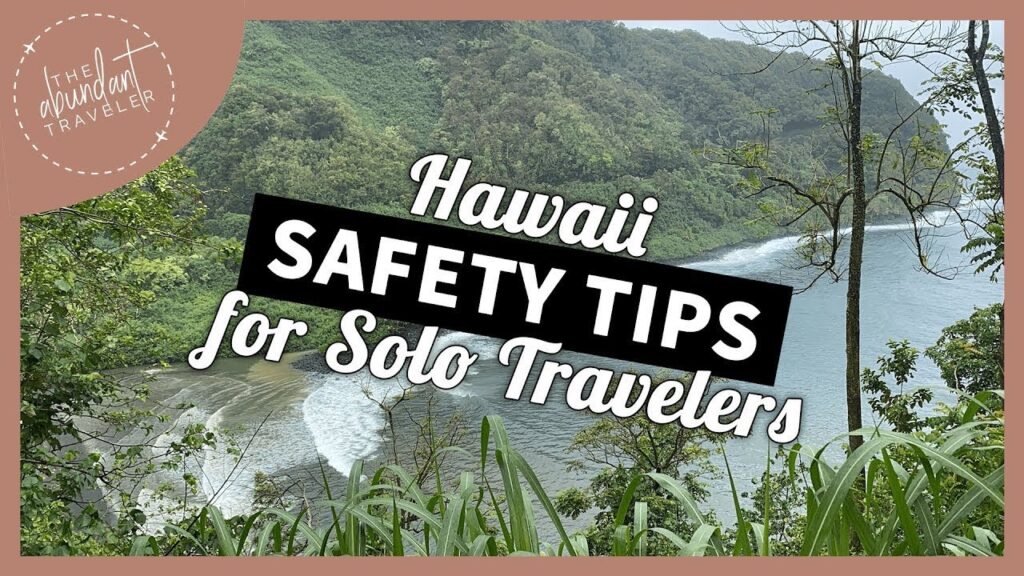
Exploring the Beaches
Choosing the right beach
Hawaii is renowned for its breathtaking beaches, each offering unique features and attractions. When choosing the right beach to visit, consider what activities you enjoy and the type of beach experience you’re looking for. If you’re a beginner surfer or want to try your hand at paddling, Waikiki Beach on Oahu is a popular choice. On the other hand, if you prefer a more secluded and untouched setting, consider visiting Lanikai Beach on Oahu or Makalawena Beach on the Big Island. If you’re interested in snorkeling or spotting sea turtles, Hanauma Bay Nature Preserve on Oahu or Honolua Bay on Maui are excellent choices.
Beach safety precautions
While enjoying the beautiful beaches of Hawaii, it’s important to prioritize your safety. Start by checking the surf conditions and heed any warnings or advisories. If you’re not an experienced swimmer, stick to beaches with lifeguards on duty and swim within designated areas. Be aware of your limitations and ensure you have the necessary skills and equipment before attempting any water activities such as snorkeling or surfing. Remember to apply sunscreen regularly, seek shade during the hottest hours of the day, and stay hydrated to avoid sunburn and heatstroke.
Water activities
Hawaii offers a wide range of water activities for all levels of experience and adventure-seekers. Whether you’re looking to try your hand at surfing, paddleboarding, snorkeling, or even scuba diving, there are plenty of opportunities to get in the water and enjoy the marine life. If you’re a beginner, consider taking a lesson or joining a guided tour to learn the basics and ensure your safety. Whatever water activity you choose, always respect the ocean’s power and never underestimate its currents or waves. Be mindful of any posted advisories or warnings and follow the instructions of trained professionals to have a safe and memorable experience.
Beach etiquette
When visiting the stunning beaches of Hawaii, it’s important to observe proper beach etiquette to ensure an enjoyable experience for everyone. Keep in mind that many beaches in Hawaii are public, so respect the space and privacy of other beachgoers. Avoid playing loud music or engaging in disruptive behavior that may disturb others. Always clean up after yourself and dispose of any trash responsibly. Additionally, if you’re interested in taking photos or videos, be respectful of others’ privacy and ask for permission before including them in your shots. By practicing good beach etiquette, you’ll contribute to a positive and welcoming beach culture in Hawaii.
Exploring Nature and Wildlife
Visiting national parks and reserves
Hawaii boasts several national parks and reserves that showcase the unique natural beauty of the islands. One of the most famous national parks is Hawai’i Volcanoes National Park on the Big Island, which offers a rare opportunity to witness volcanic activity up close. Haleakala National Park on Maui is another must-visit, with its stunning landscapes and the opportunity to watch the sunrise from the summit of a dormant volcano. Remember to check the park’s website for any closures or advisories before your visit and follow any safety guidelines provided by park staff.
Hiking trails and guided tours
Hawaii is a paradise for hiking enthusiasts, with countless trails that lead to breathtaking viewpoints, waterfalls, and hidden gems. From easy coastal walks to challenging summit hikes, there’s a trail for every fitness level and interest. To make the most of your hiking experience, consider joining a guided tour or hiring a local guide who can provide valuable insights and ensure your safety. Always wear appropriate footwear, carry enough water and snacks, and be prepared for changing weather conditions, especially in higher elevations.
Wildlife encounters
Hawaii is home to a variety of unique wildlife species, including sea turtles, colorful fish, dolphins, and even humpback whales during certain times of the year. While it’s an incredible experience to encounter these animals in their natural habitat, it’s important to do so responsibly and with respect for their wellbeing. When snorkeling or diving, be mindful of your movements and avoid touching or disturbing the marine life. If you encounter sea turtles or other animals on the beach, admire them from a distance and never attempt to touch or feed them. By practicing responsible wildlife viewing, you’ll help preserve the natural ecosystems of Hawaii for future generations to enjoy.
Nature photography tips
With its stunning landscapes and abundant wildlife, Hawaii offers endless opportunities for nature photography. Whether you’re a professional photographer or simply a hobbyist, here are a few tips to capture the best shots:
- Lighting is key: Take advantage of the golden hours of sunrise and sunset, when the lighting is soft and warm. This will add a beautiful glow to your photos.
- Composition matters: Experiment with different angles and perspectives to create visually interesting compositions. Look for leading lines, symmetry, and contrasting elements to make your photos more engaging.
- Capture the details: Don’t just focus on the grand vistas. Pay attention to the smaller details, such as unique plant life, intricate patterns, or interesting textures. These can add depth and dimension to your photographs.
- Incorporate people or wildlife: Including people or wildlife in your photos can add a sense of scale and create a storytelling element. However, always be respectful and ask for consent before photographing individuals.
- Experiment with long exposures: If you’re interested in capturing the movement of water or clouds, try using long exposure techniques. This can create a dreamy effect and add a sense of motion to your photographs.
By following these tips and letting your creativity guide you, you’ll be able to capture the beauty of Hawaii in your photographs and create lasting memories.
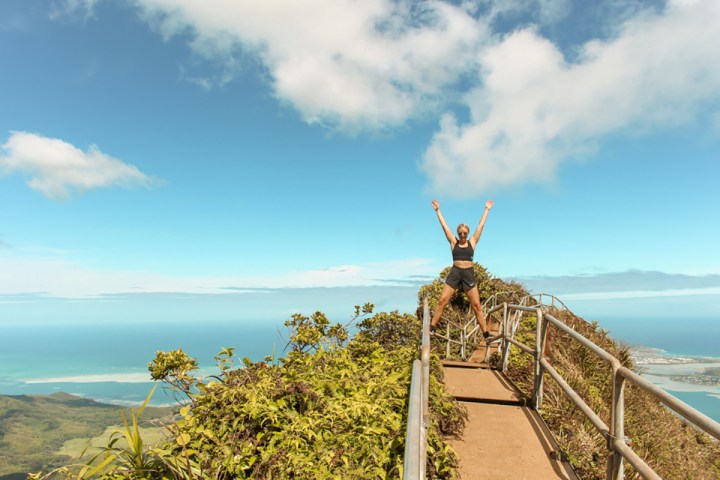
Cultural Experiences
Attending traditional Hawaiian ceremonies
One of the highlights of visiting Hawaii is the opportunity to witness and participate in traditional Hawaiian ceremonies and rituals. From hula dancing to traditional luaus, these ceremonies offer a glimpse into the rich cultural heritage of the islands. Consider attending a hula performance, where you can witness the graceful dance accompanied by traditional music and storytelling. Additionally, attending a traditional Hawaiian luau is a fantastic way to experience the local cuisine, music, and dance. Embrace the spirit of aloha and immerse yourself in these cultural experiences to gain a deeper appreciation for Hawaii’s history and traditions.
Exploring historical sites
Hawaii is steeped in history, with numerous historical sites that offer insights into the islands’ past. For a glimpse into the ancient Hawaiian civilization, visit the Pu’uhonua o Honaunau National Historical Park on the Big Island or the Kalaupapa National Historical Park on Molokai. These sites provide a unique opportunity to learn about ancient Hawaiian culture, customs, and traditions. For a more recent historical experience, visit Pearl Harbor on Oahu, where you can learn about the events of World War II and pay homage to the lives lost. By exploring these historical sites, you’ll gain a deeper understanding of Hawaii’s past and its significant cultural and historical contributions.
Visiting cultural museums
If you’re interested in delving deeper into Hawaii’s culture, visiting cultural museums is a great way to expand your knowledge. The Bishop Museum on Oahu is one of the largest museums in Hawaii, showcasing the history, art, and natural sciences of the islands. The Polynesian Cultural Center on Oahu offers interactive exhibits, live performances, and workshops that highlight the culture and traditions of Polynesia, including Hawaii. Don’t forget to check out smaller, local museums as well, which often provide a more intimate and community-focused experience. These museums offer a wealth of information and insights into the local culture, customs, and traditions of Hawaii.
Sampling local cuisine
No trip to Hawaii is complete without indulging in the delicious local cuisine. From fresh seafood and tropical fruits to traditional Hawaiian dishes, there’s something for every palate. Don’t miss the opportunity to try famous Hawaiian specialties such as poi (a traditional staple made from taro), kalua pig (slow-roasted pork), and shave ice (a refreshing treat made from finely shaved ice with flavored syrups). Visit local farmers markets to sample the bounty of fresh produce and unique food products that Hawaii has to offer. By immersing yourself in the local cuisine, you’ll not only satisfy your taste buds but also gain a deeper understanding of the cultural significance of food in Hawaii.
Learning basic Hawaiian language
While English is widely spoken in Hawaii, learning a few basic Hawaiian phrases can greatly enhance your experience and show respect for the local culture. Start with simple greetings such as “Aloha” (hello) and “Mahalo” (thank you). Familiarize yourself with common words such as “mahina” (moon), “wai” (water), and “nalu” (wave), which are often used to describe natural elements in Hawaii. Engage in conversations with locals and ask for pronunciation tips if needed. By making the effort to learn and use a few basic Hawaiian phrases, you’ll be able to connect with the local community on a deeper level and demonstrate your appreciation for their culture.
Outdoor Adventures
Snorkeling and scuba diving
Hawaii’s crystal-clear waters offer incredible opportunities for snorkeling and scuba diving. Whether you’re a beginner or an experienced diver, there are plenty of spots to explore the vibrant coral reefs and encounter a variety of marine life. Hanauma Bay on Oahu, Molokini Crater off the coast of Maui, and Kealakekua Bay on the Big Island are just a few of the popular snorkeling and diving destinations. Consider booking a guided tour if you’re a beginner or want to explore lesser-known dive sites. Remember to follow responsible diving practices, respect the marine environment, and never touch or disturb the coral or marine life.
Surfing and paddleboarding
Hawaii is synonymous with surfing, and many travelers visit the islands specifically to ride world-class waves. Whether you’re a seasoned pro or a beginner looking to take your first lesson, Hawaii offers surf spots for all levels of experience. Some of the best surfing beaches include Waikiki Beach and the North Shore on Oahu, Honolua Bay and Hookipa Beach Park on Maui, and Hanalei Bay on Kauai. If you prefer a more serene experience on the water, paddleboarding is a popular alternative. Rent a paddleboard and glide along the calm coastal waters, taking in the beautiful scenery and spotting marine life along the way.
Zip-lining and skydiving
For those seeking an adrenaline rush and a bird’s-eye view of the stunning Hawaiian landscape, zip-lining and skydiving are thrilling options. Zip-lining allows you to soar through the treetops, catching glimpses of waterfalls, lush forests, and panoramic views. The island of Kauai is particularly known for its zip-line adventures, with several companies offering exhilarating courses. Skydiving offers the ultimate thrill as you jump from an aircraft and experience the breathtaking beauty of Hawaii from above. Skydiving centers can be found on Oahu, Maui, and the Big Island, providing unforgettable views and an adrenaline-pumping experience.
Waterfall hikes and cliff jumping
Hawaii is home to numerous stunning waterfalls, and hiking to these cascades is a popular outdoor activity. Some of the most iconic waterfall hikes include Manoa Falls on Oahu, Twin Falls on Maui, and Akaka Falls on the Big Island. Remember to stay on designated trails, as venturing off can be dangerous and harmful to the delicate ecosystem. If you’re feeling adventurous, some waterfalls offer the opportunity for cliff jumping into natural pools below. Before attempting any cliff jumps, make sure to assess the depth and conditions of the water, and only jump from a safe height. Always prioritize safety and exercise caution when engaging in cliff jumping activities.
ATV and off-road tours
For those who crave an off-road adventure, ATV (all-terrain vehicle) tours are a thrilling way to explore the rugged landscapes of Hawaii. These tours take you through scenic trails, offering panoramic views and the opportunity to discover hidden gems that are inaccessible by traditional vehicles. From the lush valleys of Kauai to the volcanic terrain of the Big Island, ATV tours provide an adrenaline-pumping experience while immersing you in the natural beauty of Hawaii. Before embarking on an ATV tour, make sure to follow the safety guidelines provided by the tour operator and wear appropriate protective gear.
Volcano exploration
Hawaii is known for its active volcanoes, and exploring these geological wonders is a must for adventure enthusiasts. Hawai’i Volcanoes National Park on the Big Island offers a unique opportunity to witness the power and beauty of volcanic activity. Take a hike along the Kilauea Iki Trail, which leads you through a barren lava field and past steam vents and volcanic craters. If conditions allow, you may even have the chance to witness lava flowing into the ocean. It’s important to check the park’s website or consult with rangers for the latest updates on volcanic activity and any closures for safety reasons. While exploring volcanoes, always prioritize your safety and respect any posted warnings or advisories.
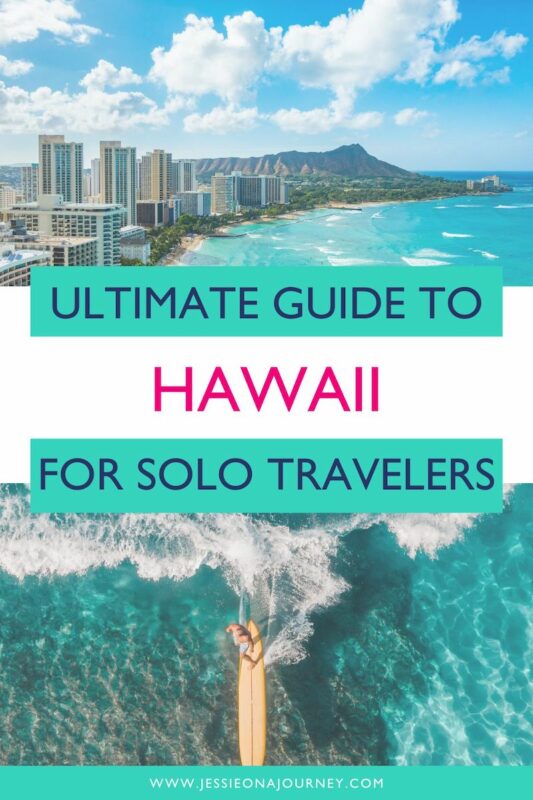
Meeting People and Making Friends
Joining organized tours or activities
One of the best ways to meet people and make friends while traveling solo in Hawaii is by joining organized tours or activities. Whether it’s a guided hike, a surfing lesson, or a cultural workshop, these group experiences provide an opportunity to connect with fellow travelers who share similar interests. Participate actively, engage in conversations, and be open to making new connections. Don’t be shy to ask for recommendations or invite others to join you for meals or exploring other attractions. The shared experiences and camaraderie formed during these tours can often result in lifelong friendships.
Attending social events
Hawaii is known for its vibrant social scene, with various events and festivals taking place throughout the year. Keep an eye out for local events such as art exhibits, live music performances, or beach clean-up initiatives. Many cities in Hawaii also organize weekly farmers markets, where you can interact with locals and sample fresh produce. Attending social events not only allows you to immerse yourself in the local culture but also provides an opportunity to meet and connect with like-minded individuals in a relaxed and friendly atmosphere.
Participating in group activities
Participating in group activities is another way to meet people and make friends in Hawaii. Many hostels, hotels, and community centers organize group outings such as group hikes, beach clean-ups, or outdoor yoga classes. These activities often attract solo travelers who are looking to connect with others and explore the island together. Take advantage of these opportunities to engage in conversations, share experiences, and build meaningful connections with fellow travelers. By participating in group activities, you’ll enhance your travel experience and create lasting memories with newfound friends.
Using online travel communities
The digital age has made it easier than ever to connect with fellow travelers and locals using online travel communities. Websites and social media platforms dedicated to travel provide a platform for like-minded individuals to connect, share advice, and even meet up in real life. Participate in online forums or Facebook groups dedicated to Hawaii travel to ask questions, seek recommendations, or find potential travel buddies. Utilize travel apps such as Meetup or Couchsurfing to find events or meetups happening in the area. These online communities can be invaluable resources for meeting people and building connections, both virtually and in person.
Taking Care of Yourself
Maintaining personal well-being
As a solo traveler, it’s important to prioritize your personal well-being during your trip to Hawaii. Take the time to relax, recharge, and practice self-care. Embrace Hawaii’s laid-back lifestyle and allow yourself moments of solitude and reflection. Engage in activities that bring you joy, such as reading a book by the beach, meditating, practicing yoga, or indulging in a spa treatment. Listen to your body and recognize when you need rest or time to yourself. By taking care of your well-being, you’ll be able to fully enjoy your trip and make the most of your experience in Hawaii.
Staying hydrated and protected from the sun
Hawaii’s warm and tropical climate means that staying hydrated and protected from the sun is essential. Drink plenty of water throughout the day, especially if you’re engaging in outdoor activities or spending time in the sun. Carry a reusable water bottle with you and refill it regularly to ensure you’re properly hydrated. Apply sunscreen generously and frequently, even on cloudy days. Opt for a broad-spectrum sunscreen with a high SPF to protect your skin from harmful UV rays. Additionally, seek shade during the hottest hours of the day and wear a wide-brimmed hat and sunglasses for added sun protection.
Adapting to the local time zone
If you’re traveling from a different time zone to Hawaii, it’s important to adapt to the local time to avoid jet lag. Upon arrival, try to adjust your sleeping and eating schedule to align with the local time as quickly as possible. Expose yourself to natural light during the day to help regulate your body’s internal clock. Avoid napping excessively during the day, as this may disrupt your sleep patterns at night. Stay hydrated, eat balanced meals, and engage in light physical activity to boost your energy levels. By adapting to the local time zone, you’ll be able to make the most of your days and fully enjoy your time in Hawaii.
Finding solitude and relaxation
While Hawaii offers numerous activities and attractions, it’s important to find moments of solitude and relaxation during your trip. Take the time to unwind and connect with the tranquility of the islands. Find a quiet spot on the beach to watch the sunset, meditate, or simply soak in the beauty of your surroundings. Visit a local spa or wellness center to enjoy a massage or indulge in a rejuvenating treatment. Explore the lush gardens and scenic trails that offer peaceful retreats away from the tourist crowds. By finding moments of solitude and relaxation, you’ll be able to recharge and fully appreciate the beauty and serenity of Hawaii.
Dealing with homesickness
It’s normal to experience moments of homesickness when traveling alone, especially in a place as different and far away as Hawaii. To cope with homesickness, maintain a connection with loved ones back home through phone calls, video chats, or social media. Share your experiences and highlights of your trip with family and friends, allowing them to be a part of your journey. Surround yourself with positive and like-minded individuals, whether through organized tours, social events, or online travel communities. Engage in activities that bring you joy and remind you of home, such as cooking your favorite meal or listening to familiar music. Lastly, remind yourself of the reasons why you embarked on this solo trip and the amazing experiences that await you in Hawaii.
Managing expenses
Managing your expenses and sticking to your budget is crucial when traveling solo in Hawaii. Start by creating a realistic budget that considers accommodation, transportation, meals, activities, and souvenirs. Research and compare prices before making any bookings or purchases. Take advantage of free or inexpensive activities such as hiking, exploring beaches, and attending cultural events. Opt for local eateries and markets instead of touristy restaurants for a more budget-friendly dining experience. Consider purchasing groceries and cooking some of your meals to save money. Additionally, look for discounts or group rates for activities and attractions. By managing your expenses wisely, you can make the most of your budget and enjoy a fulfilling and affordable trip to Hawaii.
